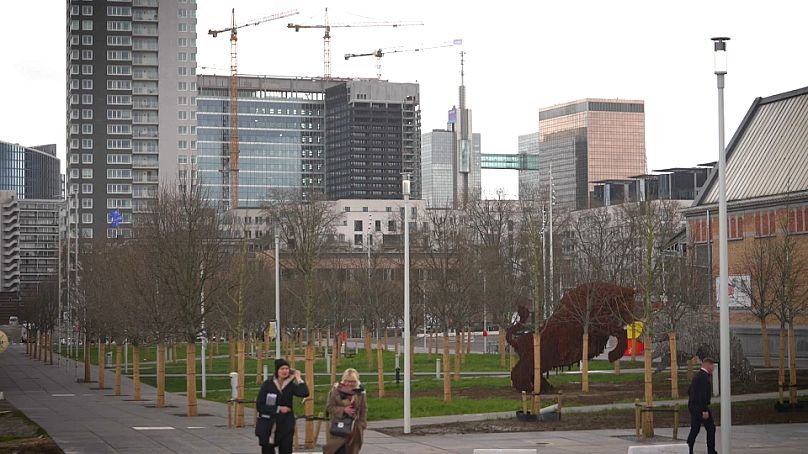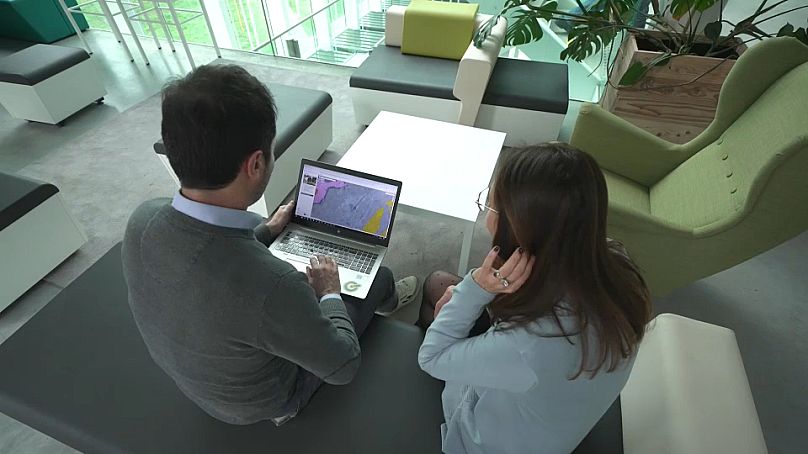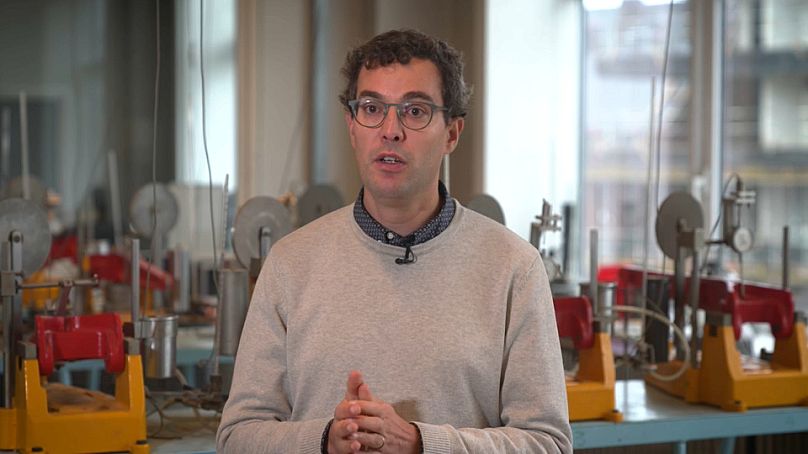In this latest episode of Smart Regions, we explore how one EU-funded project is trying to address the lack of data on the ground beneath the Belgian capital.
In the Belgian capital of Brussels, an increasing number of its major buildings are powered by heat found deep beneath the ground.
Geothermal energy is heat energy from the Earth's crust and is - in principle - an inexhaustible and clean source of energy.
As awareness of the impacts of climate change increases, and with fossil energy sources running out, the hunt for renewable energy sources is well and truly underway.
Brugeo is an EU-funded project that brings together specialist companies and scientists to promote the geothermal potential of the Brussels-Capital region.
"We drilled about 45 wells in the Brussels-Capital [region] to investigate the potential of the subsoil," explained Jos Van Steenwinkel, General Manager of Advanced Groundwater Techniques (AGT).
"We are using the subsoil at a certain depth to store energy, energy that can be used for heating during the winter. And that can be used for cooling during the summer season."
AGT is set to implement the first open geothermal system in the basement of Brussels' Gare Maritime, a former industrial freight train station in the Tour & Taxis district of Brussels, just northwest of the city centre, where almost all the biggest buildings are equipped with geothermal energy.
The Brussels Environment building is one of the pioneers, with eight wells which go down to a depth of 87 metres to capture the heat of the subsoil.
To understand how geothermal energy can be used in a specific area of the region, and to work out how far down you have to drill, Mathieu Agniel, a hydrogeologist at Brussels Environment told Smart Regions that the BrugeoTool application is the best place to start.
"We can see the Brussels Region, we have several features with BrugeoTool. We can visualise the subsoil in 3D, we can do virtual drilling. We can analyse the geothermal pre-feasibility through the geothermal application," he said.
Based on the address of a plot of land in Brussels, it is possible to obtain detailed information on the nature of the subsoil and its geothermal properties.
"We know that the subsoil is naturally warm at a depth of 10 meters, and that’s about 12 degrees here in Belgium all year round," Mathieu Agniel revealed.
Brugeo's budget stands at just over €1 million, almost half of which comes from the European Cohesion Policy. A total of five partners, including universities and research institutes, are involved in the project.
Brugeo's project manager, Pierre Gerard, explains that this project aims to address the lack of knowledge of the Brussels subsoil, which was one of the obstacles to the development of geothermal energy here.
He also says that for geothermal energy to be truly sustainable, it is necessary to replenish the calories that are being pumped from the earth.
"We have to ensure that what we extract during the winter can be compensated for by this natural regeneration during the summer.
"And this is where knowledge of the geothermal properties of the subsoil is really important, because a clay soil, for example, or a sandy soil will not regenerate at the same speed."
The demand for geothermal installations in Brussels has increased significantly as a result of the energy crisis and projects like Brugeo.














